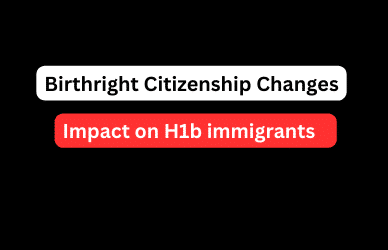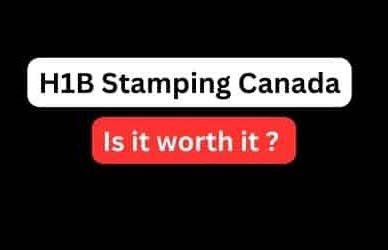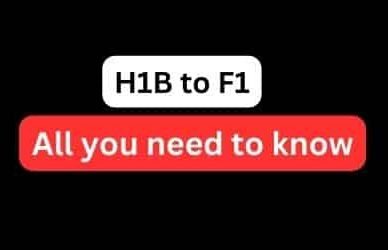The Department of State recently announced an important development for H1B visa holders in the United States. Beginning in 2024, a pilot program will allow eligible H1B visa holders to stamp and renew their visas domestically as a result eliminating the need for international travel. This initiative aims to enhance the visa renewal process for skilled workers. Here’s a detailed guide on the H1B stamping in the USA pilot program, including the step-by-step application process. Initially approximately 20,000 eligible participants would be allowed only if they meet the requirements.
What is the H1B Stamping Pilot Program?
The H1B stamping pilot program is designed to permit certain H1B visa holders to renew their visas within the United States. Previously, H1B visa holders had to travel outside the U.S. to renew their visas, which involved significant costs and the potential for extended stays abroad due to processing delays. The pilot program seeks to streamline this process, offering a more efficient alternative for eligible participants.
Who is Eligible for the Program?
To participate in the H1B stamping in USA pilot program, applicants must meet specific criteria, ensuring that only a select group is eligible. The eligibility requirements include:
1. H1B Visa Status:The program is limited to H1B visa holders. No other visa categories are included in the pilot phase.
2. Previous Visa Issuance Location:Applicants must have had their previous H1B visa issued by the U.S. Embassy or Consulate in Canada (between January 1, 2020, and April 1, 2023) or India (between February 1, 2021, and September 30, 2021).
3. No Reciprocity Fee: Applicants must not be subject to a nonimmigrant visa issuance fee, commonly known as a reciprocity fee.
4. Interview Waiver Eligibility: Participants must qualify for a waiver of the in-person interview requirement, generally applicable to those whose last visa was issued within the past 48 months.
5. Biometric Data on File: Applicants must have previously submitted ten fingerprints in connection with their last visa application.
6. Maintain H1B Status: Applicants must currently be maintaining their H1B status in the U.S. and plan to re-enter the country in H1B status after a temporary stay abroad.
Detailed Application Process
The application process for the H1B stamping pilot program is designed to be straightforward yet thorough. Below is a step-by-step guide to help you navigate the process.
1. Application Period and Slot Availability
– The pilot program will begin accepting applications on January 29, 2024, and will close on April 1, 2024, or earlier if all application slots are filled.
– Each week, approximately 4,000 application slots will be released—2,000 for applicants whose previous visas were issued by Mission Canada and 2,000 for those issued by Mission India.
– Slots are released on the following dates: January 29, February 5, February 12, February 19, and February 26.
2. Online Application
– Access the Application Portal: Begin by visiting the dedicated domestic visa renewal website at [travel.state.gov](https://travel.state.gov/content/travel/en/us-visas/employment/domestic-renewal.html).
– Select the Appropriate Post: Choose the U.S. Embassy or Consulate (either Canada or India) where your most recent H1B visa was issued.
– Complete the Self-Assessment Tool: The portal will guide you through a series of questions to assess your eligibility for the pilot program. Above all this tool will not retain your responses.
3. Complete and Submit Form DS-160
– Filling Out the Form: Once you pass the self-assessment, you will need to complete the DS-160 Online Nonimmigrant Visa Application form.
– MRV Fee Payment: After submitting the DS-160, you will be required to pay the non-refundable, non-transferable Machine-Readable Visa (MRV) fee of $205 via the online portal. Payment can be made using a major credit or debit card.
4. Document Submission
Required Documents:
Gather the following documents:
– A properly completed DS-160 form.
– A passport valid for at least six months beyond the visa application date, with a blank unmarked page for the visa foil.
– The original or a copy of your current Form I-797 Notice of Action.
– The original or a copy of your Form I-94 Arrival-Departure Record.
– One passport-sized photograph taken within the last six months that meets the Department of State’s specifications.
Sending Documents:
Instructions on where and how to send your passport and documents will be provided through the portal. You will need to use the U.S. Postal Service or a commercial courier to send your materials to the Department of State.
5. Processing and Adjudication
– Processing Time: Once your documents are received, the average processing time is expected to be six to eight weeks. The Department of State aims to complete all applications by May 1, 2024.
– Status Updates: While the Department will not provide non-automated status updates, you can check the status of your application online at [CEAC Status Tracker](https://ceac.state.gov/CEACStatTracker/Status.aspx?App=NIV).
– Decision: Your application will be adjudicated based on the information provided. If approved, your passport and visa will be returned via the U.S. Postal Service or a commercial courier. If your application is refused or if you fail to meet the pilot program requirements, your MRV fee will not be refunded, and you may need to apply for a visa renewal abroad.
6. Potential Issues and Refusals
Refusals under INA 221(g): If your application is found to be incomplete or does not meet the requirements, it may be refused under section 221(g) of the Immigration and Nationality Act. At the same time, you will be instructed to provide any missing information or correct any minor errors before April 15, 2024.
Out-of-Scope Applications: Applications that do not meet the program’s specific criteria will be returned without adjudication, and the MRV fee will be retained to cover processing costs.
Key Considerations
In general the H1B stamping USA pilot program provides a convenient domestic renewal option, participation is voluntary, and visa issuance is not guaranteed. Those whose applications are not approved will need to reapply for renewal at a U.S. consulate or embassy abroad.
The program is intended to reduce the workload on U.S. embassies and consulates, particularly in high-demand countries like India and Canada. By offering a domestic renewal option, the Department of State hopes to improve global processing times.
Conclusion
The H1B stamping in the USA pilot program is a significant development for H1B visa holders. This program could save time, reduce travel expenses, and simplify the visa renewal process. If you meet the eligibility criteria, consider taking advantage of this pilot program when your H1B visa is up for renewal.
For further assistance or updates on the program, H1BVisaHub.com is here to support you every step of the way. Stay informed, and be sure to check the official Department of State website for the latest information.
This detailed guide is designed to help you understand and navigate the H1B stamping pilot program. If you have any additional questions, feel free to reach out to our team at H1BVisaHub.com.
Reference- federalregister.gov website






